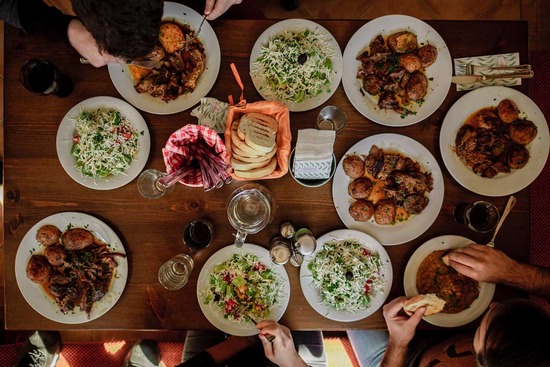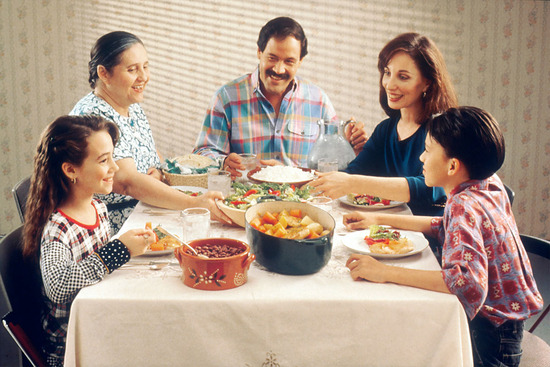The Adventist Haystack (It’s Not What You Think) + 4 Recipes
If you’ve ever heard Seventh-day Adventists mention “haystacks,” they’re probably not talking about literal stacks of hay.
Haystacks are basically a taco salad—with an Adventist spin on it! Most versions are vegetarian and offer an endless combination of tasty toppings. We eat them often because they’re healthy, scrumptious, and easy to make.
But where exactly did haystacks come from? And who came up with such an unusual name?
Get to know more about this interesting part of Adventist culture in the following sections:
Let’s dig in!
What are haystacks?
Haystacks are a customizable, healthy, and delicious meal often served at Adventist gatherings. They have all the major components of a taco salad for people to assemble themselves. We typically start our haystacks with a bed of corn or tortilla chips, followed by lettuce, beans, cheese, salsa, and sour cream.
Most Adventists make their haystacks vegetarian.
But the great thing about this meal is that it’s customizable. You can make it light or hearty and use any toppings you want for a variety of flavors and textures.
Some might opt for fresh ingredients from the grocery store, but for those on a budget, canned goods work just as well. They don’t require much prep work—you only have to heat up a couple of ingredients. From there, it’s just a matter of placing the toppings in different bowls and letting your guests put it together.
The history of haystacks
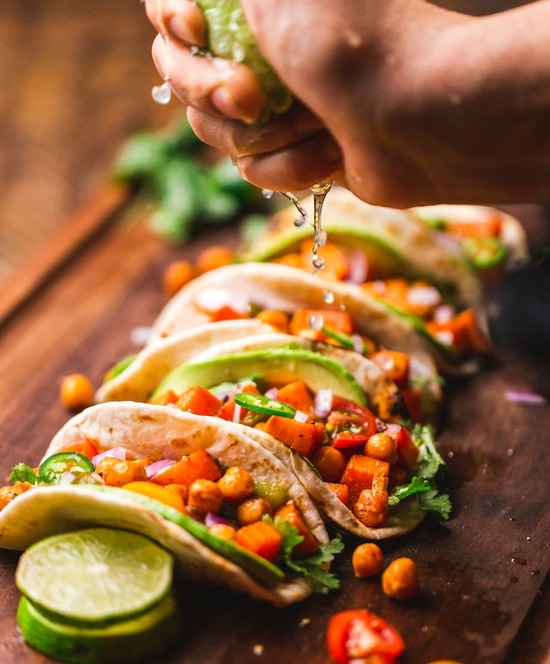
Photo by Chad Montano on Unsplash
The idea for haystacks all began with an Adventist woman named Ella May Hartlein who loved Mexican-inspired food.1
In the 1950s Mrs. Hartlein lived in Arizona, where she and her family enjoyed a variety of Mexican cuisine. But they eventually moved to the northeast, where she couldn’t find many Mexican restaurants.2
That’s when she decided to cook up a little something herself.
She first showcased her dish at a local picnic, and it was an instant hit! After that, it was called “the Hartlein special” until it was given the name “haystacks.”3
How this name came about is still a mystery.
But it’s not hard to guess that haystacks got their name from the way they’re shaped. A big mound of lettuce and crispy corn chips—plus all the toppings—might remind you of a stack of hay.
Turns out, all those toppings do more than add taste. Adventists have some other good reasons for eating them.
Why Adventists eat haystacks
Haystacks are a great meal to have if you’re looking for something quick, easy, and inexpensive. And Adventists especially enjoy them because they offer a healthy meal that coincides with our desire to care for our bodies.
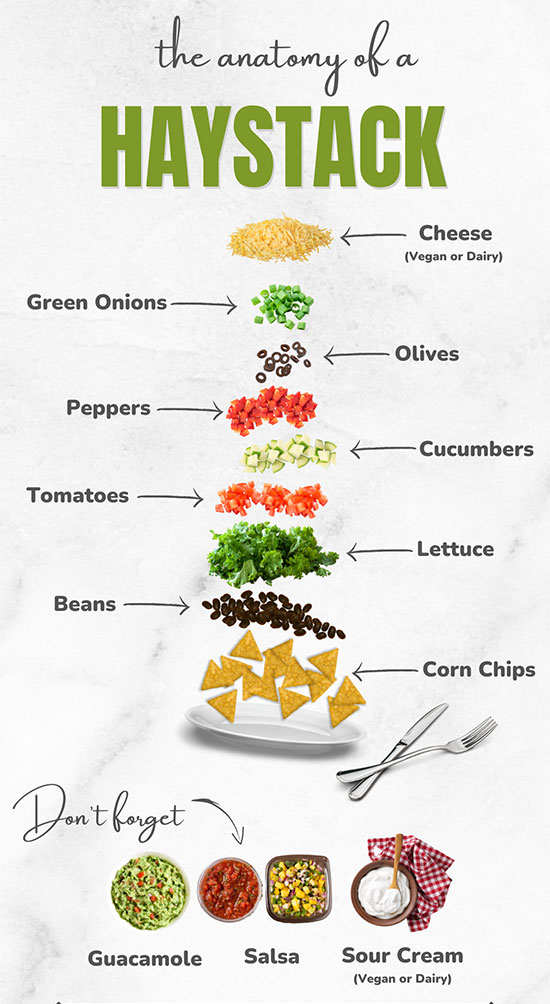
Photo from Unsplash
One principle we hold dear is the principle of healthy living. That’s why many of our dishes are plant-based or vegetarian—haystacks included. Plant foods are full of nutrients to effectively fuel our bodies.
Here are just a couple of examples of what you’ll find in haystacks:
- Tomatoes, avocados, and certain beans are high in potassium.4
- Bell peppers are high in vitamin A.5
- Beans and leafy greens are high in6 calcium.
Not to mention that the whole dish is high in fiber and low in cholesterol (or even cholesterol-free if you’re making a vegan version). Beans make it a great protein option, too (especially for vegetarians).
Although not all Adventists are vegetarian, many have benefited from these plant-based benefits. In fact, Adventists are some of the longest living people in the world, mainly because of what we eat.7
Healthy eating matters to us because we want to care for our bodies, which the Bible says are temples of the Holy Spirit:
“Or do you not know that your body is the temple of the Holy Spirit who is in you, whom you have from God, and you are not your own? For you were bought at a price; therefore glorify God in your body and in your spirit which are God’s” (1 Corinthians 6:19–20, NKJV).
Taking care of our bodies is a way to thank God for all He’s done for us. Through healthy habits, we glorify Him, serve Him better, and experience a higher quality of life.
Try haystacks for a simple and healthy meal
Haystacks demonstrate that eating healthy doesn’t have to be difficult or expensive. Something as simple and cheap as this Adventist classic can turn canned vegetables into a satisfying meal you’ll look forward to having again and again.
And it’ll put you on the path to trying some other healthy and delicious meals!
Want the ultimate guide to practical Adventist eating? Look no further than our Adventist nutrition article for practical tips on staying healthy and living longer.
4 Mouthwatering Haystack Recipes
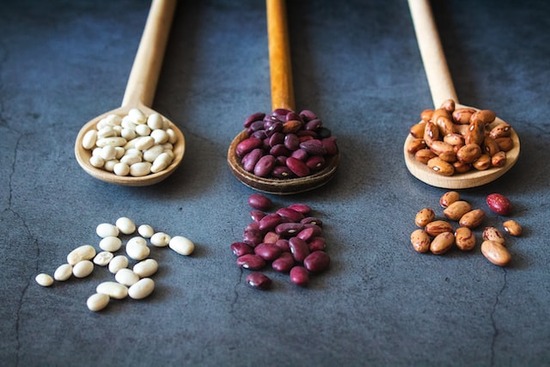
Photo by Tijana Drndarski on Unsplash
Interested in making haystacks at home? We’ve got four tasty recipes just for you!
Each of these recipes serves about six people. Because they are so simple, they require little to no prep time. Put all of the ingredients in separate bowls so each person can add whichever toppings they want.
Place any perishable leftovers in airtight containers in the fridge. Most of your toppings should last about a week.
The Original
- 4 bags (262 g) of Fritos corn chips
- 1 large can (40.5 oz) of cooked kidney beans
- 1 package (340 g) of veggie taco meat
- 2 bags (227 g) of shredded iceberg lettuce
- 1 small can (6 oz) of sliced black olives
- 1 diced tomato
- 1 diced onion
- 1 bag (226 g) of shredded cheese (dairy or plant-based)
- 1 container (16 oz) of sour cream (dairy or plant-based)
- 1 jar (16 oz) salsa
- 1 container (16 oz) of guacamole
Instructions: Heat up the kidney beans and veggie taco meat. Get a large dinner plate and layer on the ingredients—corn chips first, then the beans, taco meat, lettuce, shredded cheese, vegetables, and toppings. You can use your fork or corn chips to scoop up your haystack.
Pinto Bean Haystack
- 2 large bags of lime tortilla chips
- 3 cups of cooked white rice
- 2 cans (16 oz) of cooked pinto beans
- 1 jar (45 oz) of warm Ragu pasta sauce (tomato, garlic, and onion flavor)
- 1 bag (226 g) of shredded cheese (dairy or plant-based)
- 1 container (16 oz) of sour cream (dairy or plant-based)
- 1 container (16 oz) of guacamole
Instructions: Heat up the white rice, pinto beans, and Ragu sauce. Get a large plate and stack the white rice, pinto beans, Ragu sauce, shredded cheese, sour cream, and guacamole. Mix these ingredients together on your plate and scoop them up with your lime tortilla chips.
Southern Special
- 4 bags (262 g) of Fritos chili cheese corn chips
- 1 can (16 oz) of grilled corn kernels
- 3 cups Spanish rice
- 1 sautéed onion
- 2 sautéed bell peppers
- 2 cans (16 oz) of cooked black beans
- 1 jar (16 oz) of warm queso (or 2 cups of homemade vegan cheese sauce)
- 1 container (16 oz) of sour cream (dairy or plant-based)
- 1 jar (16 oz) of salsa
- 1 container (16 oz) of guacamole

Photo by Cristina Anne Costello on Unsplash
Instructions: Cook the corn, Spanish rice, onions, and peppers. Heat up the black beans and queso. Get a big plate and layer on the ingredients—first with the corn chips, then the Spanish rice, black beans, corn, onions, peppers, and additional toppings. Use a fork or your corn chips to scoop up this tasty meal!
Rainbow Haystacks
- 2 bags of blue corn chips
- 1 can (40.5 oz) of cooked red kidney beans
- 3 cups of cooked brown rice
- 2 bags (227 g) of shredded iceberg lettuce
- 1 sliced head of red cabbage
- 1 diced red onion
- 1 diced tomato
- 2 shredded carrots
- 2 diced orange bell peppers
- 2 bags (226 g) of shredded cheddar cheese (dairy or plant-based)
- 1 bottle (24 oz) of ranch dressing (dairy or plant-based)
- 1 container (16 oz) of sour cream (dairy or plant-based)
- 1 jar (16 oz) of salsa
- 1 container (16 oz) of guacamole
Instructions: Heat up the kidney beans. Get a big plate and stack the toppings. Start with the corn chips, then the rice, beans, lettuce, additional veggies, and final toppings like cheese and sour cream. This is a great option for kids. The rainbow theme can help them overlook the veggies, meaning they get a meal that’s nutritious and fun.
Related Articles
- “Haystacks or Hartlein Special?”Adventist Review, Nov. 26, 2009. https://adventistreview.org/2009-1533/2009-1533-18/archive-2976/.[↵]
- Ibid. [↵]
- Ibid. [↵]
- “10 Foods That Are High in Potassium,” Cleveland Clinic, Feb. 24, 2021. [↵]
- “Vitamin A,” Harvard T.H. Chan School of Public Health. [↵]
- Jennings, Kerri-Ann, “Top 15 Calcium-Rich Foods (Many Are Nondairy),” Healthline, Nov. 4, 2021. [↵]
- “Loma Linda, California,” Blue Zones. [↵]
Questions about Adventists? Ask here!
Find answers to your questions about Seventh-day Adventists
More Answers
What Is ASI (Adventist-Laymen’s Services and Industries)?
ASI, which stands for Adventist-laymen’s Services and Industries, is a membership-based organization that provides support for Seventh-day Adventist laypeople (Adventist professionals who aren’t pastors).
What Are Adventist Evangelistic Meetings?
The Seventh-day Adventist Church puts a huge emphasis on sharing the gospel through evangelism, or sharing the gospel through preaching, teaching, and testimony. One of the ways we accomplish this is by organizing public events called evangelistic meetings.
Christian Summer Camps—A Cherished Adventist Ministry
School’s out, the sun’s shining, and your kids are thrilled to have the summer ahead of them. Then three days in, you hear, “I’m bored…”
Do Adventists Have Their Own Bible?
Adventists have some unique beliefs—you might be able to name some of them right now. The seventh-day Sabbath. Death as a sleep. Hell as nonexistence.
What Is Vespers?
Friday rolls around, and you’re spending time with your Adventist friends or relatives when they mention they’re going to vespers tonight.
Adventist Pastors
What is the role of a pastor in the Adventist Church? The position itself, at least as far as a local congregation is concerned, is not much different from that of pastors in other protestant denominations.
The Leadership Structure of the Seventh-day Adventist Church
The Seventh-day Adventist Church has a representative form of structure that connects its 90,000-plus congregations across the globe and gives its members a part in decision-making. Though the Church was incorporated in 1863, this system came about during the church’s reorganization from 1901 to 1903. It includes four levels of organization.
Everything You Need to Know About Sabbath Meals
For Seventh-day Adventists, sharing a Sabbath meal with friends and family is one of the most special and memorable parts of the Sabbath.
What to Expect When You Go to an Adventist Church
If you’re attending an Adventist church for the first time, you may wonder what it’s really like. While each Adventist church is unique in its collective personality and local culture, Adventist church services are generally similar to most other Protestant church services.
Adventist Education
Seventh-day Adventists have historically upheld the importance of a well-rounded, high-quality education. Instead of a one-size-fits-all approach to teaching and learning, the Adventist Education system operates on the principle of educating the “whole” person.
Evangelism
Evangelism is simply sharing the truths of the Bible with someone else. And Adventists are all into it.
Everything You Need to Know About an Adventist Church Potluck
Every so often, usually on a schedule ranging from once a week to once a month to once a quarter, an Adventist church will have “fellowship dinners,” often casually referred to as potlucks.
The Seventh-day Adventist Hymnal
The Seventh-day Adventist Hymnal is a songbook used worldwide by many Adventist congregations during their worship services. Since its publication in 1985, it has helped foster praise to God while reminding church members of our mission and drawing them closer to Jesus.
Everything You Need to Know about Sabbath School
Sabbath School is the Bible study component of the church program at most Seventh-day Adventist Churches. It’s a time of Bible study on a specific topic or lesson. Instead of listening to a preacher, people interact with one another, making it a great opportunity for building friendships.
What Are Seventh-Day Adventist Sermons Like?
In nearly every Seventh-day Adventist Church, the sermon is the focal point of the main service—similar to many Protestant Christian denominations. It is a time of biblical instruction by the pastor, who shares what they’ve been studying in the Bible and preparing over the previous week.
Who Are Adventists
The Seventh-day Adventist Church—“Adventists” for short—is a Christian denomination of ordinary people who seek to follow Jesus and live out His mission in this world. Established in 1863, we hold to the Protestant principle of sola scriptura, which means the Bible guides everything we do.
How do Adventists choose what to eat?
Every day, parents go through the ritual of getting their kids to eat what is healthy and good while trying to steer them away from what can hinder the growth of their developing bodies. Nutritionists work with their clients to make better food choices.
Didn’t find your answer? Ask us!
We understand your concern of having questions but not knowing who to ask—we’ve felt it ourselves. When you’re ready to learn more about Adventists, send us a question! We know a thing or two about Adventists.



